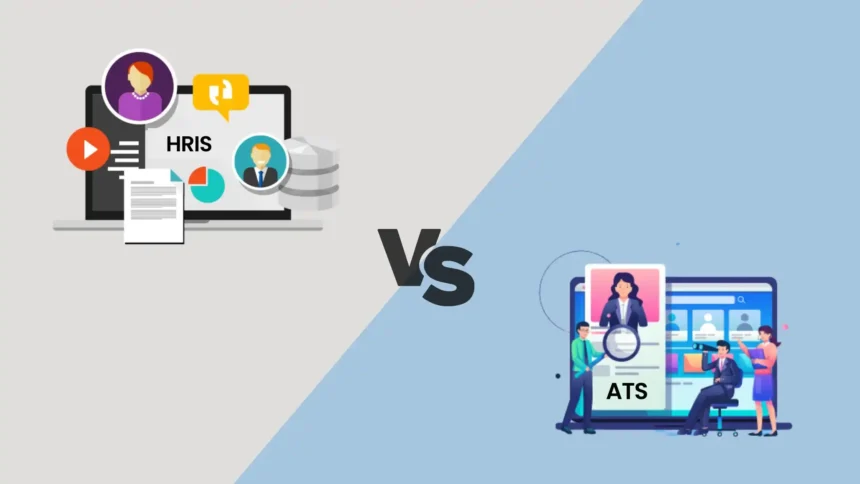In the dynamic realm of talent acquisition, the distinction between Applicant Tracking Systems (ATS) and Candidate Relationship Management (CRM) systems is crucial. Both play pivotal roles but cater to fundamentally different needs within the recruitment process. Understanding their functionalities, differences, and how they can be integrated into platforms like Axterior can significantly optimize recruitment strategies.
Understanding ATS and CRM
Applicant Tracking System (ATS) is designed to manage the hiring pipeline and applicant data. It automates the tracking of candidates through the stages of the recruiting process, from initial contact to hire. ATS solutions are highly systematic and are primarily used to post job openings, collect applications, screen candidates, and manage interviews.
Candidate Relationship Management (CRM), on the other hand, is focused on building relationships with potential candidates over time. It is used to nurture leads (potential candidates) before they apply for a position. CRM systems help recruiters maintain ongoing communication with a pool of prospective candidates, enhancing engagement and building a talent community that can be tapped into for future hiring needs.
Key Features of ATS:
- Job posting and distribution
- Resume storage and parsing
- Candidate tracking and workflow
- Interview scheduling
- Compliance and reporting
Key Features of CRM:
- Talent pool segmentation
- Campaign management and targeted communication
- Relationship tracking and analytics
- Candidate engagement through content (blogs, emails, social media)
- Event management (career fairs, open houses)
ATS vs. CRM: The Differences
While both ATS and CRM are instrumental in modern recruitment strategies, they serve different stages of the hiring process:
- ATS: Focuses on efficiency and management of the application process once candidates have applied. It is reactive, handling applicants after they have shown interest.
- CRM: Focuses on proactively building and maintaining relationships with potential candidates even before they apply. It’s about creating a sustainable talent pipeline.
Integration of ATS and CRM
The integration of ATS and CRM systems offers a comprehensive approach to recruitment, covering both the immediate needs of filling vacancies and the long-term strategy of creating a robust talent pool. This integration ensures that no potential candidate is overlooked and that each one receives a tailored experience that could eventually encourage them to apply.
Benefits of Integration:
- Enhanced Candidate Experience: Seamless transition from candidate attraction (handled by CRM) to application processing (managed by ATS) improves the overall candidate experience.
- Improved Efficiency: Reduces duplication of efforts and ensures that data flows smoothly between the two systems.
- Data-Driven Insights: Combined data from both systems can provide deeper insights into the effectiveness of recruitment strategies and candidate preferences.
Implementing ATS and CRM with Axterior
Axterior provides an innovative platform that can integrate both ATS and CRM functionalities, thereby enhancing the recruitment process. Here’s how Axterior can leverage these systems:
1. Unified Platform
Axterior offers a unified platform where both applicant data and relationship management can be handled simultaneously, ensuring a cohesive approach to talent acquisition.
2. Automation and Streamlining
With features like automated email campaigns from the CRM and auto-screening of applications in the ATS, Axterior helps save time and reduce the manual workload, allowing recruiters to focus on more strategic tasks.
3. Data Analytics
Axterior’s robust analytics tools can draw data from both the ATS and CRM components to provide actionable insights, helping recruiters refine their processes and improve outcomes.
4. Customizable Workflows
Understanding that no two recruitment processes are the same, Axterior allows for customization of workflows. This flexibility ensures that both the ATS and CRM components can be tailored to fit specific recruitment needs.
5. Enhanced Candidate Engagement
Through the CRM module, Axterior enables ongoing engagement with potential candidates via personalized communication, nurturing a relationship that could convert passive talent into active applicants.
Choosing Between ATS and CRM
When deciding whether to implement an ATS, a CRM, or both, consider the following:
- Current Needs and Future Goals: If your immediate challenge is managing a large volume of applicants efficiently, an ATS may be sufficient. However, if you’re looking to build deeper relationships with potential candidates and create a talent pool for future needs, a CRM is essential.
- Budget and Resources: Implementing and managing both systems requires a budget and skilled personnel. If resources are limited, prioritize based on your most pressing recruitment challenges.
- Integration Capabilities: Opt for solutions that offer seamless integration between ATS and CRM systems to enjoy the best of both worlds.
Conclusion
In the competitive landscape of recruitment, having the right tools can make a significant difference. ATS and CRM systems, while serving different functions, are complementary in their ability to enhance the recruitment process. Platforms like Axterior that integrate these systems provide a powerful solution for modern recruiters, combining efficiency with strategic relationship management. By understanding the distinct roles of ATS and CRM and leveraging their integration, organizations can not only streamline their recruitment processes but also build a strong foundation for future hiring success.






